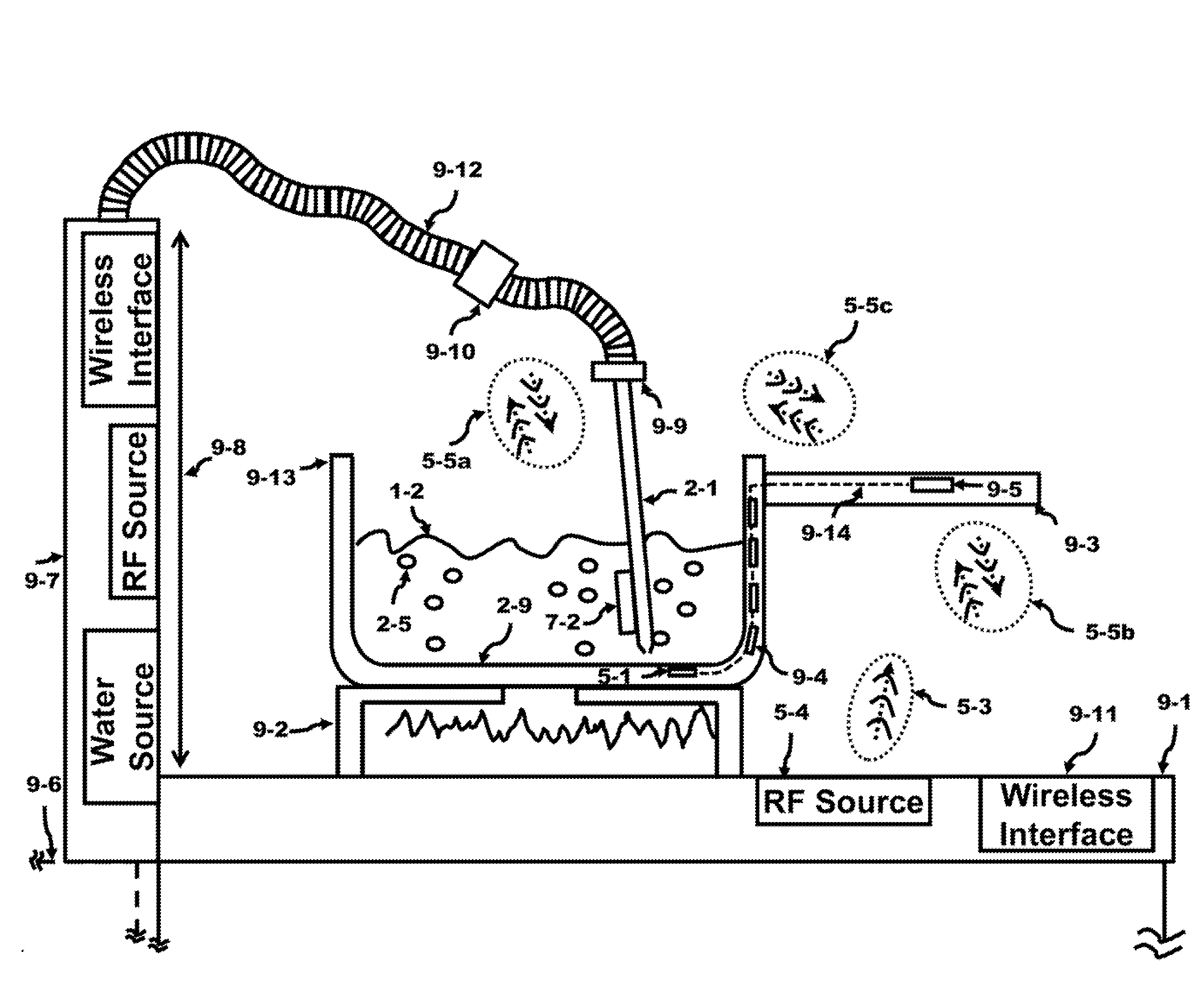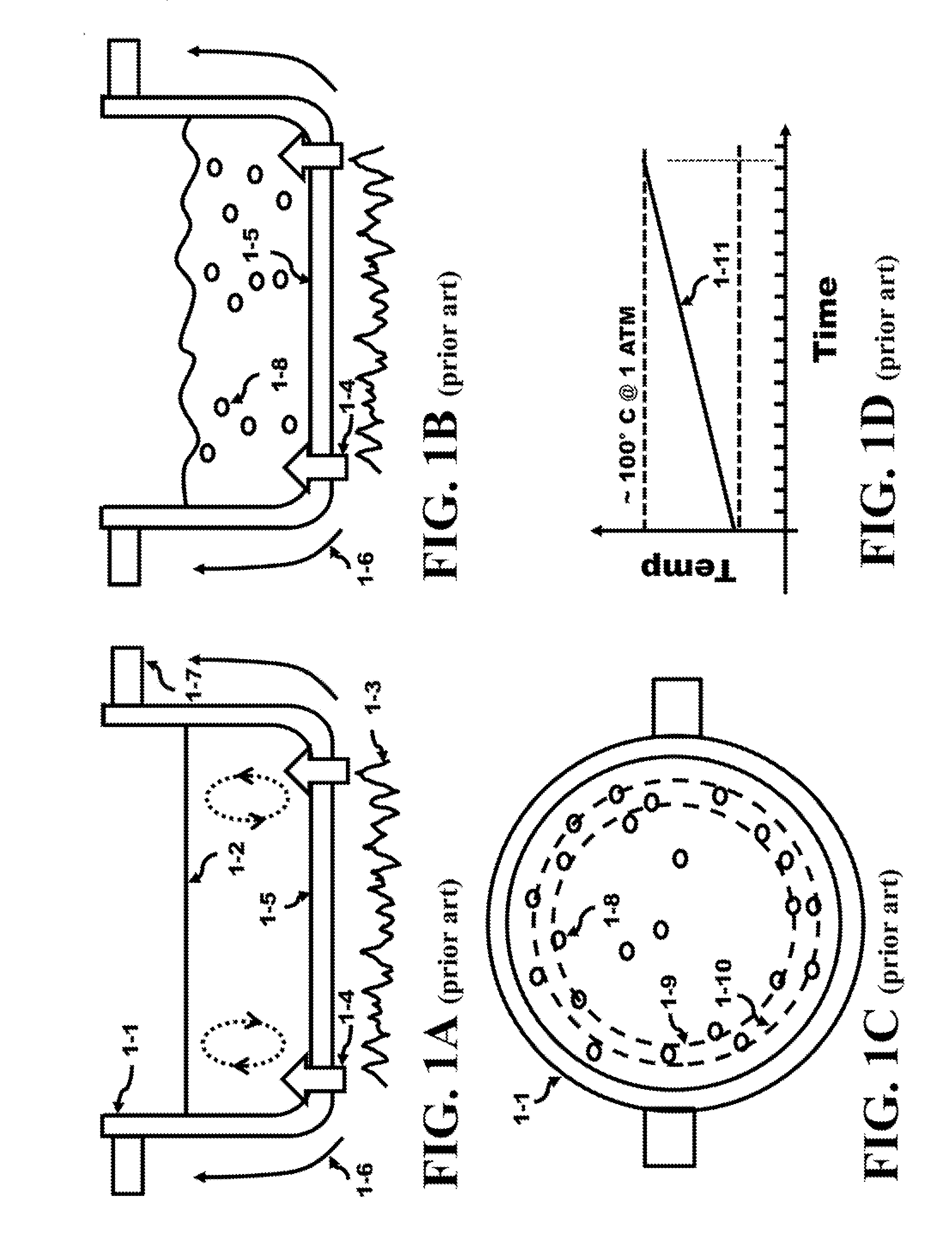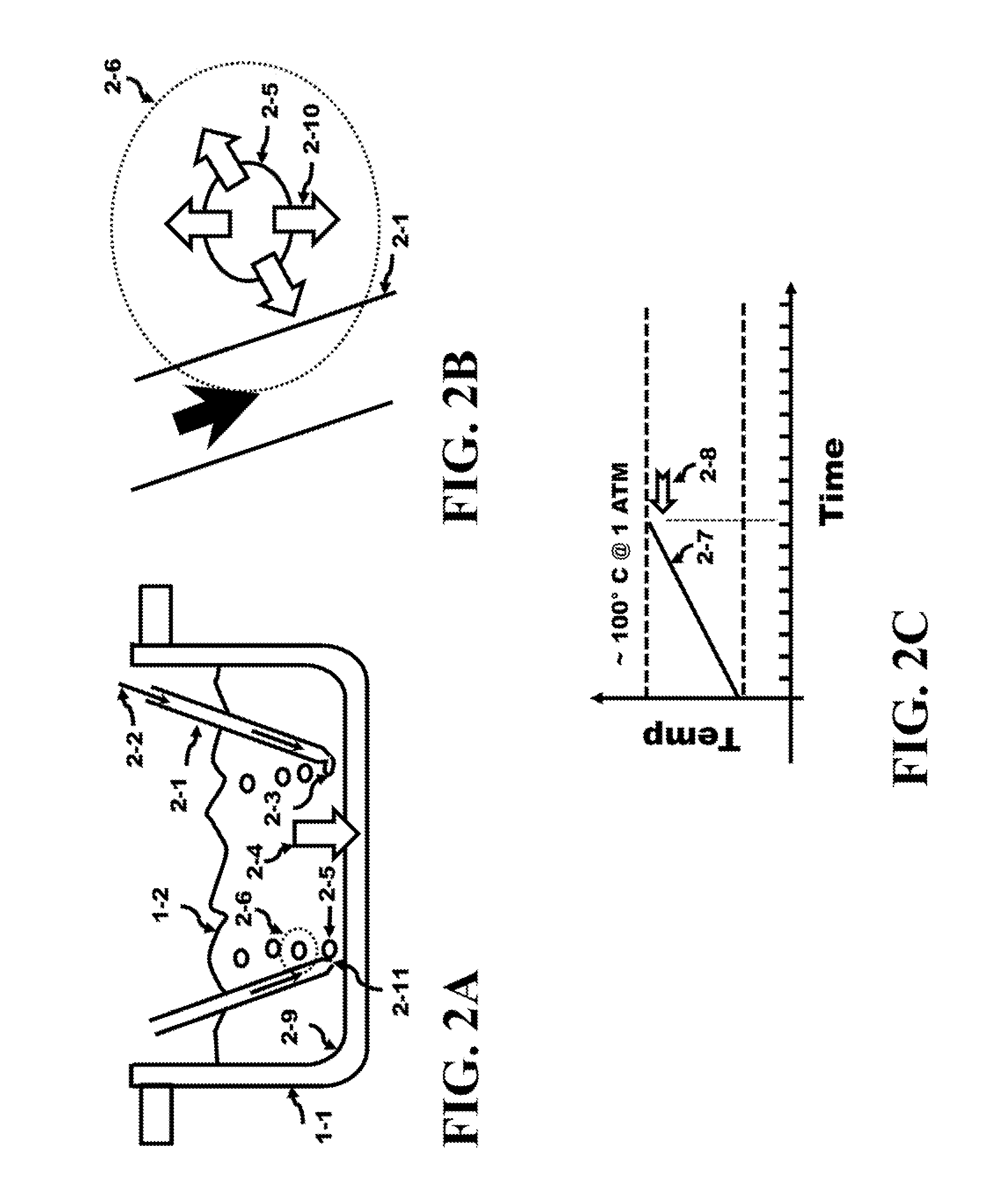Method and Apparatus for Quickly Cooking Comestibles
a technology of cometibles and cooking methods, which is applied in the direction of steam cooking vessels, water bath cooking vessels, kitchen equipment, etc., can solve the problems of contaminating the pocket cavity, the common surface interface between the milk and the surface of the vessel becomes scorched, and consumes as much as 50% of the total time spent, so as to prevent the contamination of the pocket cavity, prevent the leakage of water, and prevent the effect of contaminated porous metal
- Summary
- Abstract
- Description
- Claims
- Application Information
AI Technical Summary
Benefits of technology
Problems solved by technology
Method used
Image
Examples
Embodiment Construction
[0089]FIG. 1A illustrates a cross-sectional side view of a vessel 1-1 over a flame 1-3. The vessel 1-1 has a handle 1-7 and contains a liquid 1-2 that has a given level. The size of the vessel is usually specified by the outer diameter of the vessel. The thickness of the vessel walls subtracts a small amount from the outer diameter to provide the inner diameter of the vessel. Typically, values of the outer diameter range from approximately 10 cm to 20 cm or more, usually sized to fit the grill of a stove. The wall thickness is about 1 mm. The vessel has an inner volume related to the inner diameter and the height of the inner wall of the vessel. The values of the height of the inner wall range from approximately 3 cm to 20 cm or more. The inner volume determines the maximum liquid holding capacity of the vessel.
[0090]The grill is a structure that positions a vessel adjacent to a heating element that may be generating a heat source. The grill is in placed in physical contact with the...
PUM
 Login to View More
Login to View More Abstract
Description
Claims
Application Information
 Login to View More
Login to View More - R&D
- Intellectual Property
- Life Sciences
- Materials
- Tech Scout
- Unparalleled Data Quality
- Higher Quality Content
- 60% Fewer Hallucinations
Browse by: Latest US Patents, China's latest patents, Technical Efficacy Thesaurus, Application Domain, Technology Topic, Popular Technical Reports.
© 2025 PatSnap. All rights reserved.Legal|Privacy policy|Modern Slavery Act Transparency Statement|Sitemap|About US| Contact US: help@patsnap.com



